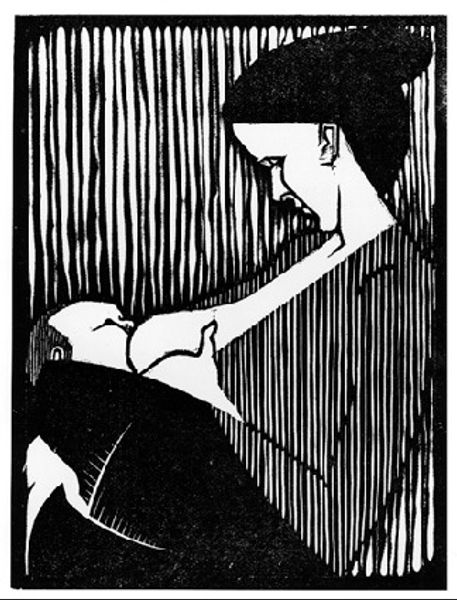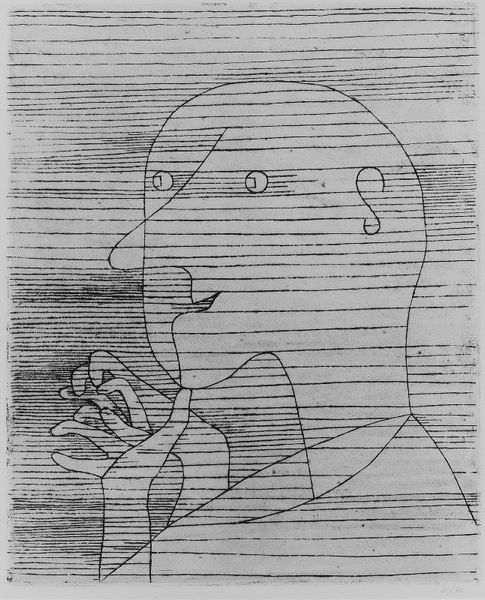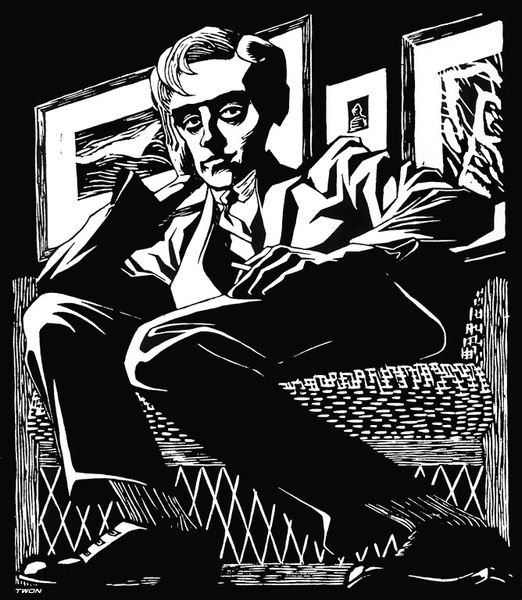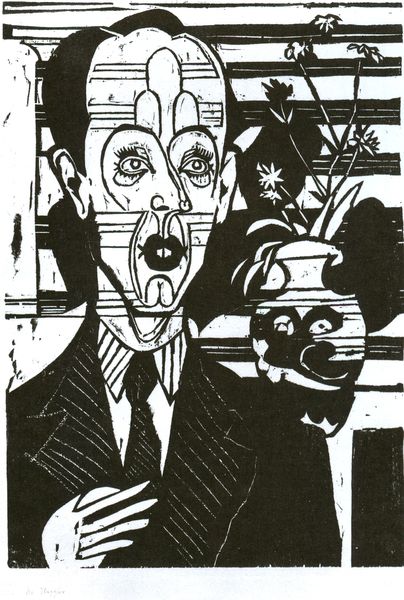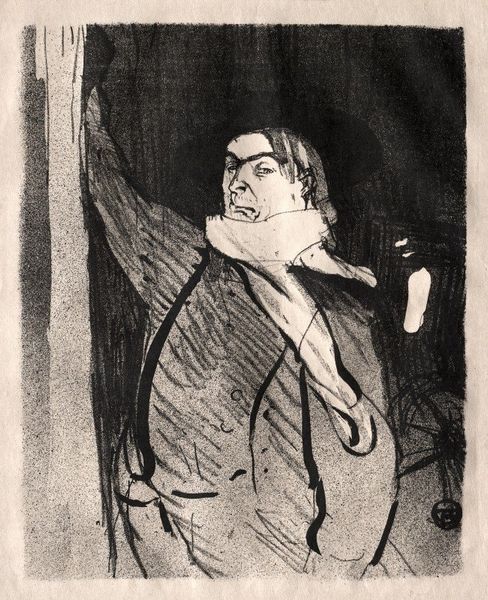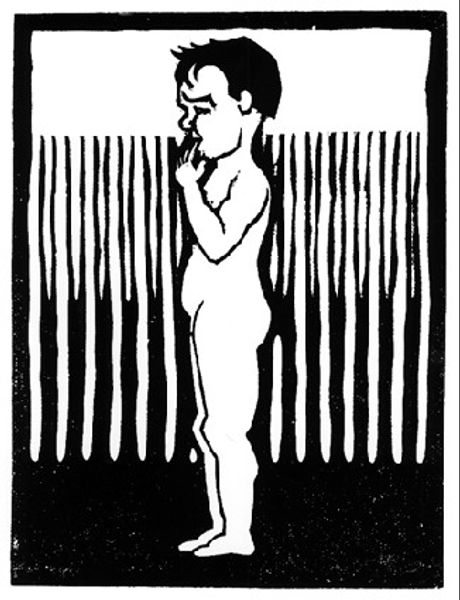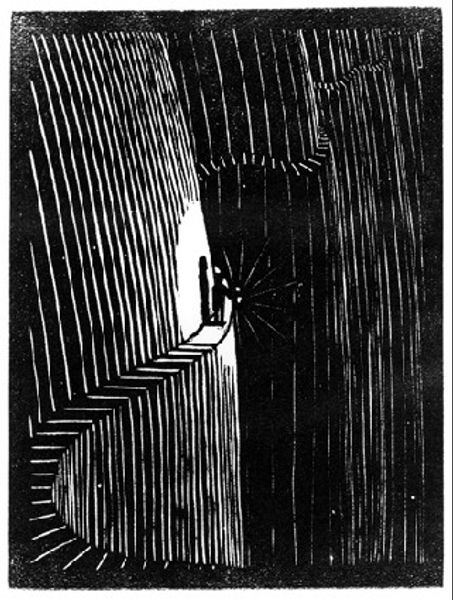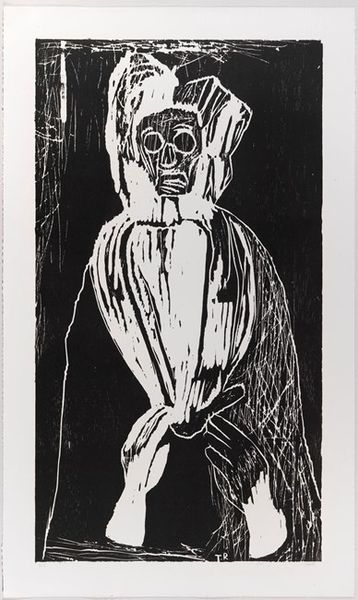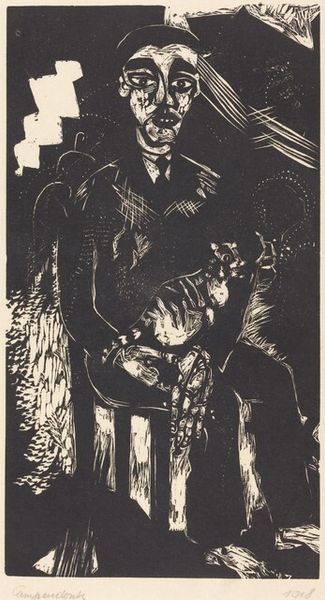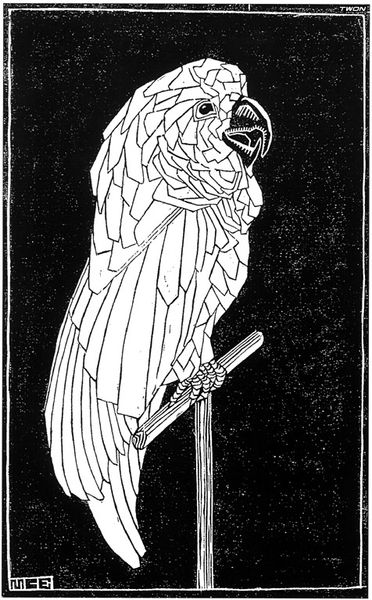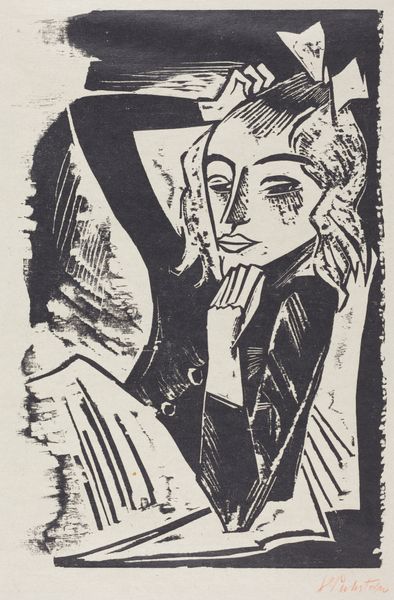
drawing, print, woodcut
#
portrait
#
drawing
# print
#
woodcut
Copyright: Public domain US
Editor: This woodcut, "Seated Man with Cat on His Lap," was created by M.C. Escher in 1919. I'm struck by how the sharp contrasts create an almost oppressive atmosphere. What stands out to you most in this piece? Curator: Well, I think the striking element is not just the starkness but how that starkness implicates a specific socio-political dynamic. Consider the context: 1919. Post World War One. How might the image of a seated man, so rigidly posed with what seems like a forced interaction with the cat, reflect the anxieties of a generation grappling with the devastation of war and a loss of traditional social structures? The sharp, unforgiving lines—do they speak to a fracturing of identity, perhaps? Editor: That's interesting, I hadn't considered that the formal qualities could speak to such broader historical issues. Is the cat also symbolic, then? Curator: Precisely. The cat itself becomes a complex symbol. Is it a mere domestic comfort, or could it be read as a symbol of repressed emotions? Consider that pets are frequently gendered. In that case, how can that specific relationship impact gender expectations during a chaotic interwar time? This print serves as an exploration of identity amidst societal upheaval. Editor: So, it's not just a portrait, but almost a commentary on the psychological impact of the time. That completely changes how I see it. Curator: Exactly. Escher is inviting us to look deeper than the surface, and to question those supposedly-rigid portraits of society, gender, and self that exist within social standards. Hopefully, it inspires you to look critically at what can exist beneath. Editor: I learned to consider socio-political situations to understand even seemingly conventional artworks. Thank you. Curator: Indeed! Hopefully it gave you another layer for engaging with this powerful piece.
Comments
No comments
Be the first to comment and join the conversation on the ultimate creative platform.

